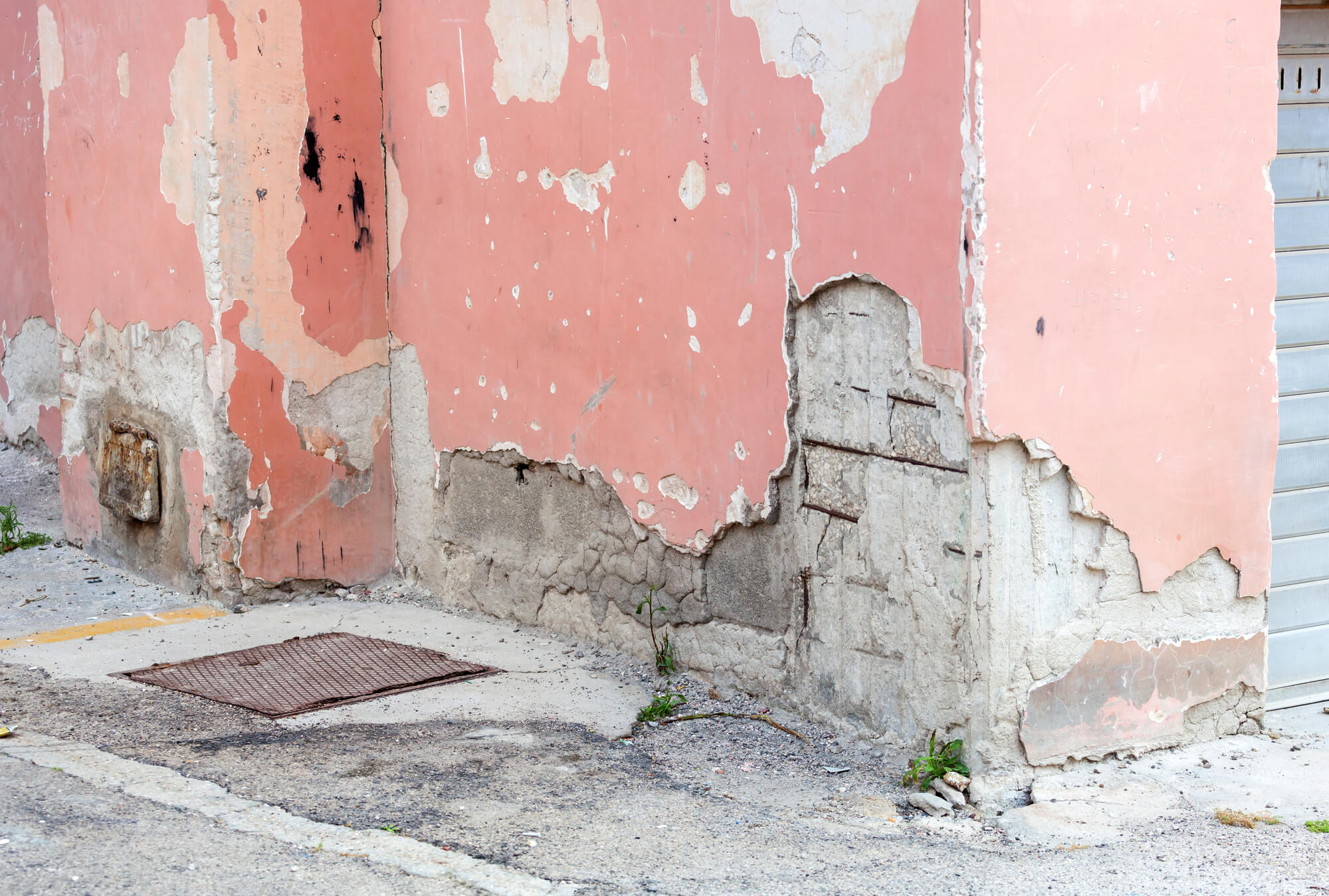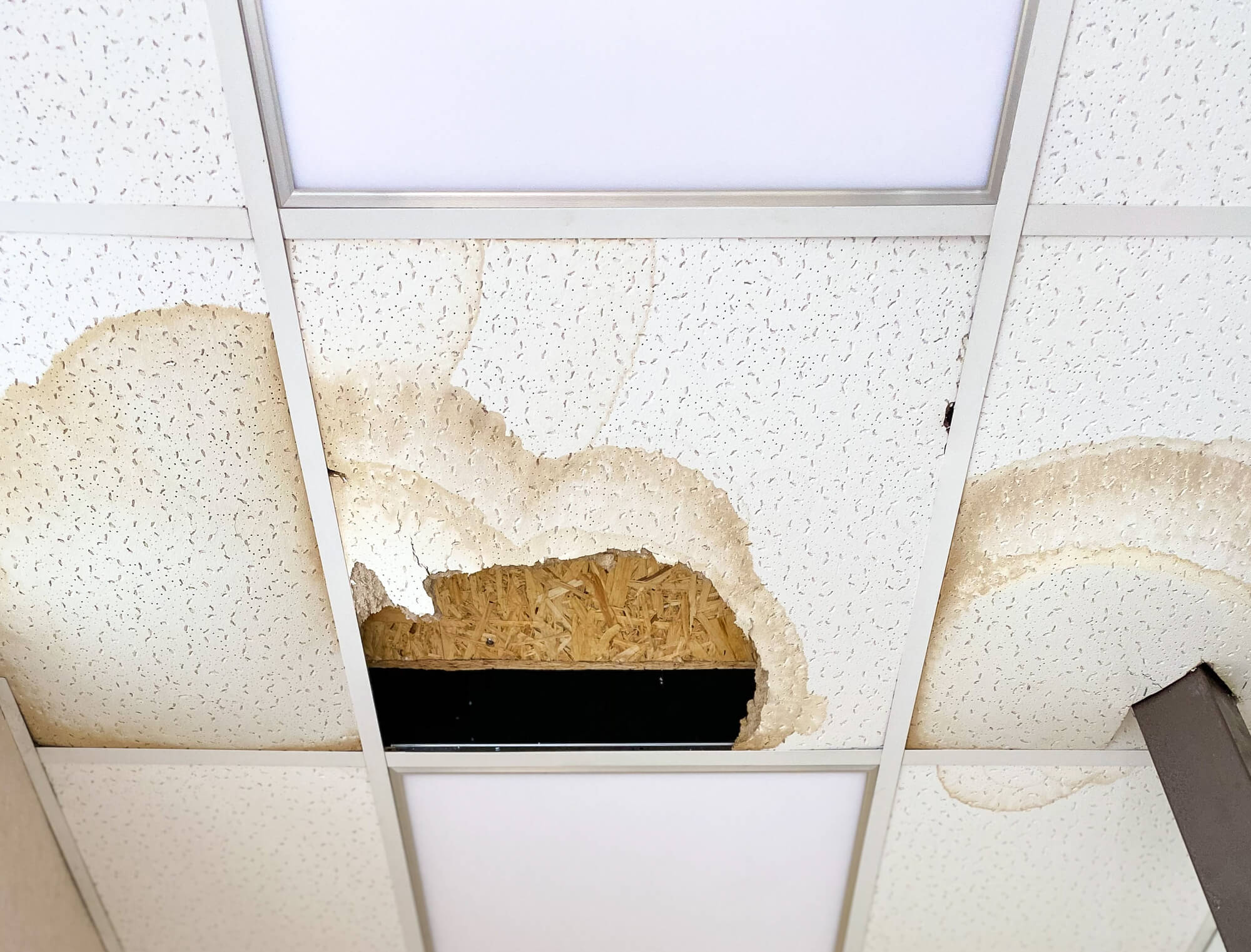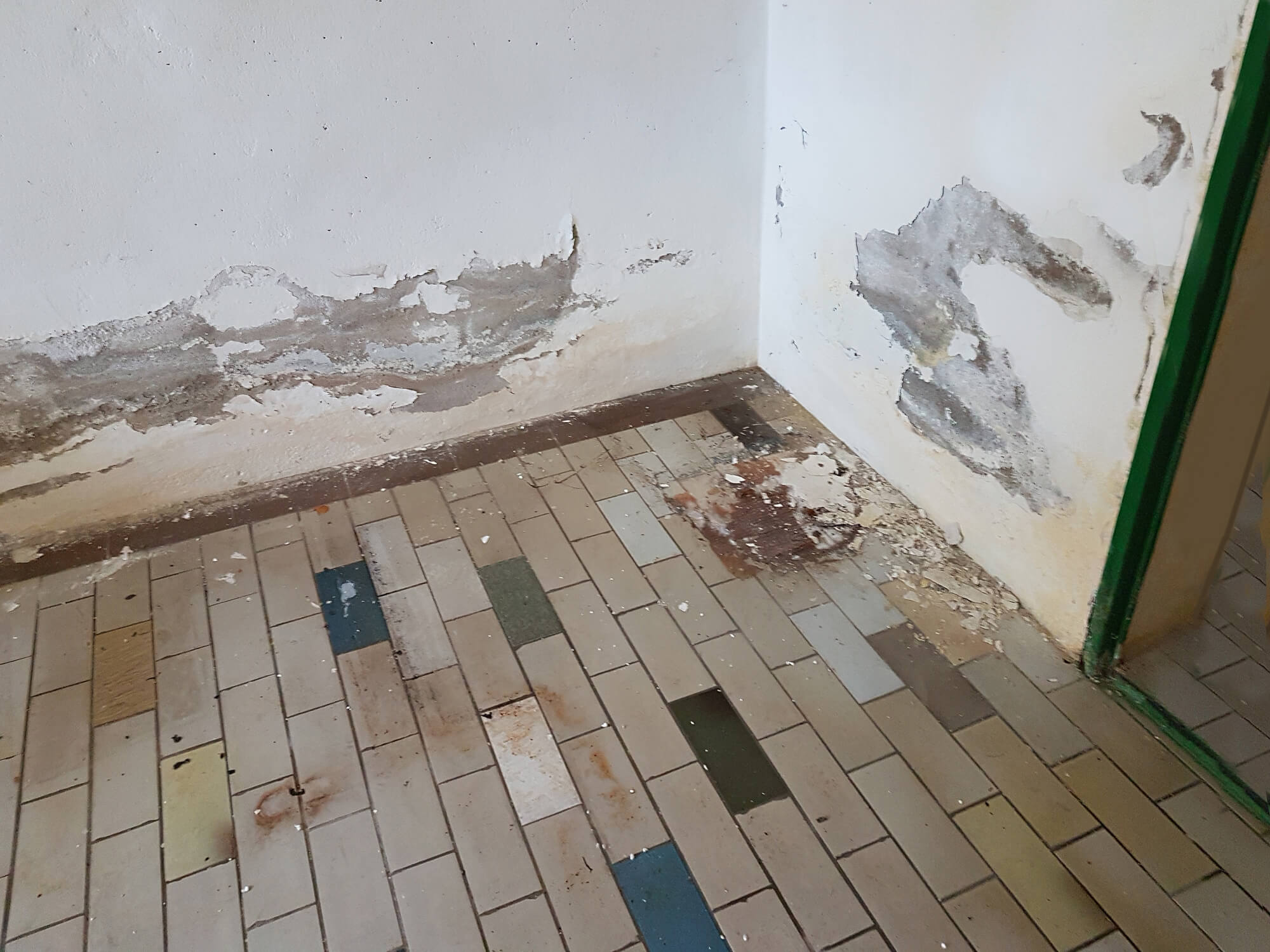June 30, 2024
Beyond Aesthetics: Combining Design and Functionality in Commercial Roofing
Many commercial property owners make the initial mistake of prioritizing aesthetics when
In the aftermath of a disaster, commercial property owners often face a daunting challenge — restoring their buildings to full functionality while minimizing downtime and financial losses. Disasters, whether they're natural events like hurricanes, earthquakes, floods, or man-made incidents like fires or chemical spills, can wreak havoc on commercial properties.
Water damage, in particular, is a common and destructive consequence of disasters, seeping into buildings, destroying structures, and disrupting daily operations. When disaster strikes, commercial property owners face the complex and multifaceted task of post-disaster and water damage restoration, which demands meticulous planning and execution.
In this blog, we will explore the strategies for streamlining the recovery process for commercial properties, with a focus on simplifying procedures and reducing delays.

Before delving into the strategies for streamlining the recovery process, commercial property owners must learn the profound impact of disasters on buildings. Disasters can strike with little warning and bring about the following challenges:
One of the most immediate and critical concerns during a disaster is the potential for structural damage. This problem can encompass physical harm to the building's foundation, walls, roof, and support structures.
Structural damage can render a property unsafe for occupancy, posing significant safety risks to occupants and emergency responders. Addressing structural damage often requires engineers and contractors to assess the extent of the damage and develop plans for repairs or reconstruction.
Water intrusion is a common consequence of disasters, especially those involving heavy rainfall, flooding, or water-based incidents. Water can infiltrate commercial properties through damaged roofs, windows, or doors, as well as from burst pipes or sewage backups.
The consequences of water damage are extensive and may include the deterioration of building materials, electrical system damage, and damage to contents like furniture, equipment, documents, and inventory. Addressing water damage necessitates rapid water extraction, drying, and dehumidification to prevent further damage and mold growth.
Fires, whether initiated by electrical malfunctions, human error, or natural disasters, can result in catastrophic damage to commercial properties. Beyond the immediate damage caused by flames, fires generate smoke and soot that can permeate building materials and contents.
Smoke and soot removal, along with structural repairs, are essential components of fire damage restoration. Moreover, firefighting efforts, while crucial for extinguishing fires, can result in water damage and complicate the restoration process.
Disasters, especially those involving fires, flooding, and storms, can damage electrical systems within commercial properties. Electrical damage may range from short-circuits and power outages to more severe issues like electrical fires.
Water and electricity are a dangerous combination, as damaged electrical systems can result in live electrical currents in water and pose a severe safety hazard. The intense heat generated by electrical fires can reach also temperatures that exceed the tolerance of building materials, causing them to weaken and lose their structural integrity.
Excess moisture resulting from water damage or high humidity levels can create favorable conditions for mold growth. Mold can thrive on various surfaces, including drywall, wood, insulation, and fabric, causing structural damage over time.
Mold colonies release enzymes that break down organic materials, including the cellulose found in wood and the paper backing of drywall. As these materials degrade, their structural integrity weakens and potentially compromises the stability of walls, ceilings, and floors.
In addition, mold can penetrate and grow within insulation, causing it to lose its insulating properties and deteriorate. This gradual but persistent structural damage underscores the importance of mitigating mold growth to ensure the long-term integrity of commercial properties.
Immediately following a disaster, the first step is to assess the extent of the damage. This process involves a comprehensive examination of the property to document the destruction and determine the scope of restoration required.
Commercial property owners and disaster response teams must meticulously catalog the damage to develop an initial restoration plan. The assessment process may involve structural engineers, safety experts, and environmental specialists to ensure a thorough understanding of the property's condition.
Once the damage assessment and insurance claims are underway, commercial property owners need to identify and secure the services of contractors and specialists for the restoration work. This step often involves extensive research, negotiations, and due diligence to select qualified professionals.
Establishing relationships with reputable contractors in advance can expedite this process, allowing for quicker mobilization and commencement of restoration activities. A qualified commercial restoration company has the following characteristics:
Once contractors are on board, the restoration phase begins with repairing and replacing damaged structural elements, systems, and building components. The team behind the project must adhere to safety regulations, building codes, and industry standards throughout the process.
Coordinating efforts among contractors and commercial property owners ensures a smooth and efficient restoration and minimizes delays. However, logistical challenges, such as material procurement, labor shortages, and weather conditions, can still impact the timeline.
The ultimate goal of the post-disaster recovery process is to reopen the commercial property for business operations. Achieving this involves various steps, including safety inspections, finalizing building permits, ensuring compliance with local regulations, and installing necessary equipment and furnishings.
During this phase, experts will also sanitize and do a thorough cleaning to provide a safe and welcoming environment for occupants.
Throughout the traditional post-disaster recovery process, several bottlenecks and delays can occur, such as:

Water damage is one of the most common issues faced by commercial properties, stemming from various sources such as flooding, leaks, burst pipes, and even firefighting efforts. Effectively managing water damage minimizes its impact on both the property and business operations, and the restoration process consists of these steps:
Once the water restoration team arrives, the process starts with swift removal of standing water using pumps and vacuums, which prevents further damage and the onset of mold growth. Experts must also implement safety measures, like shutting off power to affected areas, to stop electrical hazards.
Afterward, professionals inspect all affected areas and items meticulously and document their findings. This information is essential to create a restoration plan and to start insurance claims. Priority should be given to areas requiring immediate attention, especially if structural damage or safety hazards are present.
Industrial-grade dehumidifiers and air movers are employed to facilitate the rapid drying of affected structures, including walls, floors, and ceilings. Thorough drying and dehumidification prevent long-term damage and mold infestations.
Experts also inspect and address moisture trapped in building materials as an integral part of this process.
If mold is detected, specialists in mold remediation should be engaged to safely remove and remediate affected areas. Reputable contractors like Blue Team use biocides when necessary, which aid in the elimination of mold, inhibit its potential resurgence, and ensure a thorough and lasting remediation process.
Following thorough drying and sanitization, the property can undergo the restoration process. The project may entail repairing or replacing damaged building materials, insulation, and electrical systems.
All repairs must meet safety standards and adhere to building codes to ensure the property's long-term integrity.
- Establish a disaster preparedness plan that outlines procedures and responsibilities for each stage of restoration.
- Implement a streamlined and efficient process for conducting damage assessments immediately after a disaster.
- Utilize technology, such as digital documentation tools, to expedite the assessment and documentation of damage.
- Ensure the assessment team includes experts in structural integrity, safety, and environmental concerns.
- Assign a dedicated team or individual responsible for managing insurance claims.
- Maintain organized records and documentation of damages, costs, and expenses related to restoration.
- Engage in open and clear communication with insurance adjusters to facilitate a fast claims process.
- Establish relationships with pre-qualified contractors in advance.
- Maintain a roster of trusted professionals who can be mobilized quickly in the event of a disaster.
- Check if these contractors are familiar with your property and its specific needs.
- Utilize digital platforms to streamline document management and communication throughout the restoration process.
- Consider using project management software that allows real-time updates, progress tracking, and document sharing.
- Appoint a dedicated project manager to oversee the restoration process and ensure efficient coordination among contractors and specialists.
- Conduct regular meetings and status updates to address any issues or delays promptly.
- Prioritize safety by adhering to all relevant safety regulations and guidelines.
- Engage safety experts to conduct inspections and ensure the restoration process is free from potential hazards.
- Develop a business continuity plan that outlines the steps required to resume operations as quickly as possible.
- Consider alternative locations or arrangements for business operations during the restoration process.
- Continuously monitor the progress of restoration activities using digital tools and reporting systems.
- Adjust the restoration plan as needed to address any unforeseen challenges or changes in scope.
By following these steps, commercial property owners can streamline the post-disaster restoration process, allowing for a more efficient and cost-effective recovery while minimizing disruptions to their business operations.

If you find yourself in need of fire and water damage restoration, construction, reconstruction, or roofing services for your commercial property, we encourage you to contact BlueTeam. We specialize in providing comprehensive solutions for post-disaster recovery.
When you work with us, our team will keep also you updated with the Blue Team App, which offers real-time updates, progress tracking, and document management throughout the process.
Ensure your commercial property is prepared for the unexpected and can recover swiftly with the help of Blue Team. Contact us today to learn more about our services.